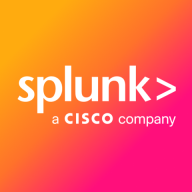

Cribl and Splunk Synthetic Monitoring are competing in the product monitoring category. Splunk Synthetic Monitoring seems to have the upper hand due to its extensive monitoring features, which may justify its higher price point.
Features: Cribl provides robust data processing, integrates efficiently with various data sources, and ensures rapid insights. Splunk Synthetic Monitoring offers comprehensive monitoring tools, advanced synthetic tests, and real-time visibility into system performance.
Ease of Deployment and Customer Service: Cribl offers a straightforward deployment model and responsive customer service, making it easier to integrate into existing systems. Splunk Synthetic Monitoring delivers a reliable deployment experience but requires more configuration due to its feature-rich platform, though it still provides commendable customer support.
Pricing and ROI: Cribl is known for offering a low-cost entry point with significant ROI from its data optimization. Splunk Synthetic Monitoring demands a higher initial investment, which is justified by its comprehensive features for those needing in-depth monitoring.


Cribl optimizes log collection, data processing, and migration to Splunk Cloud, ensuring efficient data ingestion and management for improved operational efficiency.
Cribl offers seamless log collection directly from cloud sources, allowing users to visually extract necessary data and replay specific events for in-depth analysis. It provides robust management of events, parsing, and enrichment of data, along with effective log size reduction. Cribl is particularly beneficial for migrating enterprise logs, optimizing usage, and reducing costs while streamlining the transition between different log management tools.
What are Cribl's most important features?
What benefits and ROI should users look for?
Cribl is widely implemented in industries requiring extensive data management, such as technology and finance. Users leverage Cribl to handle log collection, processing, and migration efficiently, ensuring smooth operation and effective data analysis. It aids in managing temporary data storage during downtimes and better handling historical data, preventing data loss and allowing extended periods for viewing statistics and monitoring trends.
Customers use Splunk Synthetic Monitoring to proactively monitor application performance, simulate user interactions, and identify potential issues before impacting end-users. They appreciate its ability to provide detailed insights into application behavior and detect downtime early.
Splunk Synthetic Monitoring is highly valued for real-time alerts and comprehensive data analysis, helping businesses ensure optimal functionality and user experience. It offers precise error tracking, insightful analytics, and robust network monitoring capabilities. Users benefit from simulating user interactions, which enhance performance assessment and issue resolution. The customizable alert system and in-depth reporting contribute to improved operational efficiency. Automated test execution and scheduling provide seamless continuity for processes, while its comprehensive dashboards facilitate real-time data visualization and troubleshooting.
What are the key features?Splunk Synthetic Monitoring finds implementation across diverse industries, offering tailored solutions to unique requirements. In finance, it helps ensure the reliability of trading platforms, while in healthcare, it aids in maintaining the uptime of critical health applications. E-commerce businesses use it to simulate user interactions, ensuring seamless shopping experiences.
We monitor all Application Performance Monitoring (APM) and Observability reviews to prevent fraudulent reviews and keep review quality high. We do not post reviews by company employees or direct competitors. We validate each review for authenticity via cross-reference with LinkedIn, and personal follow-up with the reviewer when necessary.